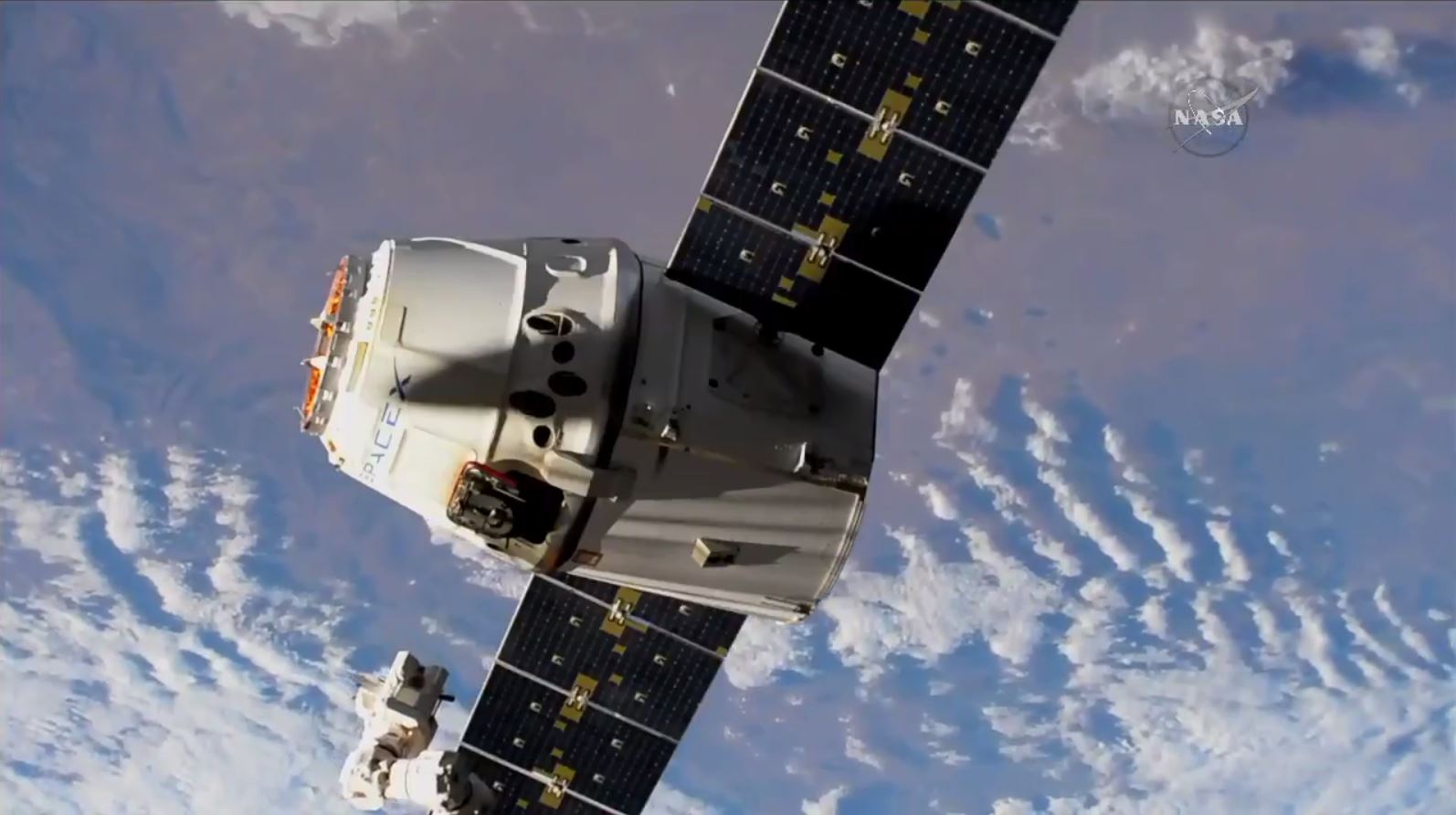Back Again … Again: SpaceX's Dragon Makes Historic 2nd Splashdown

A SpaceX Dragon spacecraft departed the International Space Station and splashed down in the Pacific Ocean today (July 3), finishing its historic second journey to the orbiting lab.
The space station's robotic arm, Canadarm-2, released the robotic resupply vessel at 2:41 a.m. EDT (0641 GMT), beginning Dragon's roughly 5.5-hour journey back to Earth. That journey ended with a successful landing in the Pacific Ocean, a few hundred miles southwest of the California coast, SpaceX representatives said.
"Good splashdown of Dragon confirmed — completing first re-flight of a commercial spacecraft to and from the @Space_Station," SpaceX announced via Twitter today. [How SpaceX's Dragon Space Capsule Works (Infographic)]
The cargo spacecraft was the first Dragon vehicle to be sent back into space for a second trip; it also ferried supplies, equipment and experiments to the space station in 2014. SpaceX personnel will recover the spacecraft and ferry it back to Long Beach, Calif. When it arrives, SpaceX will remove crucial cargo immediately to return for NASA analysis in Houston, NASA officials said in a blog post, and prepare the Dragon spacecraft itself to return to SpaceX's test facility in McGregor, Texas.
Dragon initially brought close to 6,000 lbs. (2,700 kilograms) to the space station, and it carried more than 4,100 lbs. (1,900 kg) of cargo and experiments back to Earth for analysis. That cargo includes an experiment that studied the impact of microgravity on fruit flies' hearts, mouse samples from a test of an osteoporosis drug and a look at how stem cells react to microgravity.
But there's one piece of cargo Dragon wasn't carrying: Originally the experimental Roll-Out Solar Array (ROSA) was supposed to be stowed in Dragon's unpressurized trunk, which would be ejected to burn up in Earth's atmosphere. But after the successful week-long test of the flexible solar panel, ground control was unable to roll it back up for storage. So instead, it's making its own way to eventually burn up.
A ground team guided Canadarm-2 to detach the Dragon spacecraft from the station, before NASA astronauts Jack Fischer and Peggy Whitson robotically released it while observing from the station's cupola.
Get the Space.com Newsletter
Breaking space news, the latest updates on rocket launches, skywatching events and more!
SpaceX's Dragon spacecraft is the only cargo craft that can return in one piece from the space station — Orbital ATK's Cygnus spacecraft, Russia's Progress craft and Japan's H-11 Transfer Vehicle all burn up in Earth's atmosphere on their return home.
Fischer, Whitson and Russian cosmonaut Fyodor Yurchikhin spent weeks packing the Dragon spacecraft before its departure while working on the station's science investigations. They are also preparing for a Russian spacewalk coming later this year by maintaining and double-checking the country's Orlan spacesuits. On July 28, a Russian Soyuz spacecraft is scheduled to launch with additional crew.
Editor's note: This story was updated to reflect that Dragon has splashed down in the Pacific Ocean.
Email Sarah Lewin at slewin@space.com or follow her @SarahExplains. Follow us @Spacedotcom, Facebook and Google+. Original article on Space.com.
Join our Space Forums to keep talking space on the latest missions, night sky and more! And if you have a news tip, correction or comment, let us know at: community@space.com.

Sarah Lewin started writing for Space.com in June of 2015 as a Staff Writer and became Associate Editor in 2019 . Her work has been featured by Scientific American, IEEE Spectrum, Quanta Magazine, Wired, The Scientist, Science Friday and WGBH's Inside NOVA. Sarah has an MA from NYU's Science, Health and Environmental Reporting Program and an AB in mathematics from Brown University. When not writing, reading or thinking about space, Sarah enjoys musical theatre and mathematical papercraft. She is currently Assistant News Editor at Scientific American. You can follow her on Twitter @SarahExplains.









